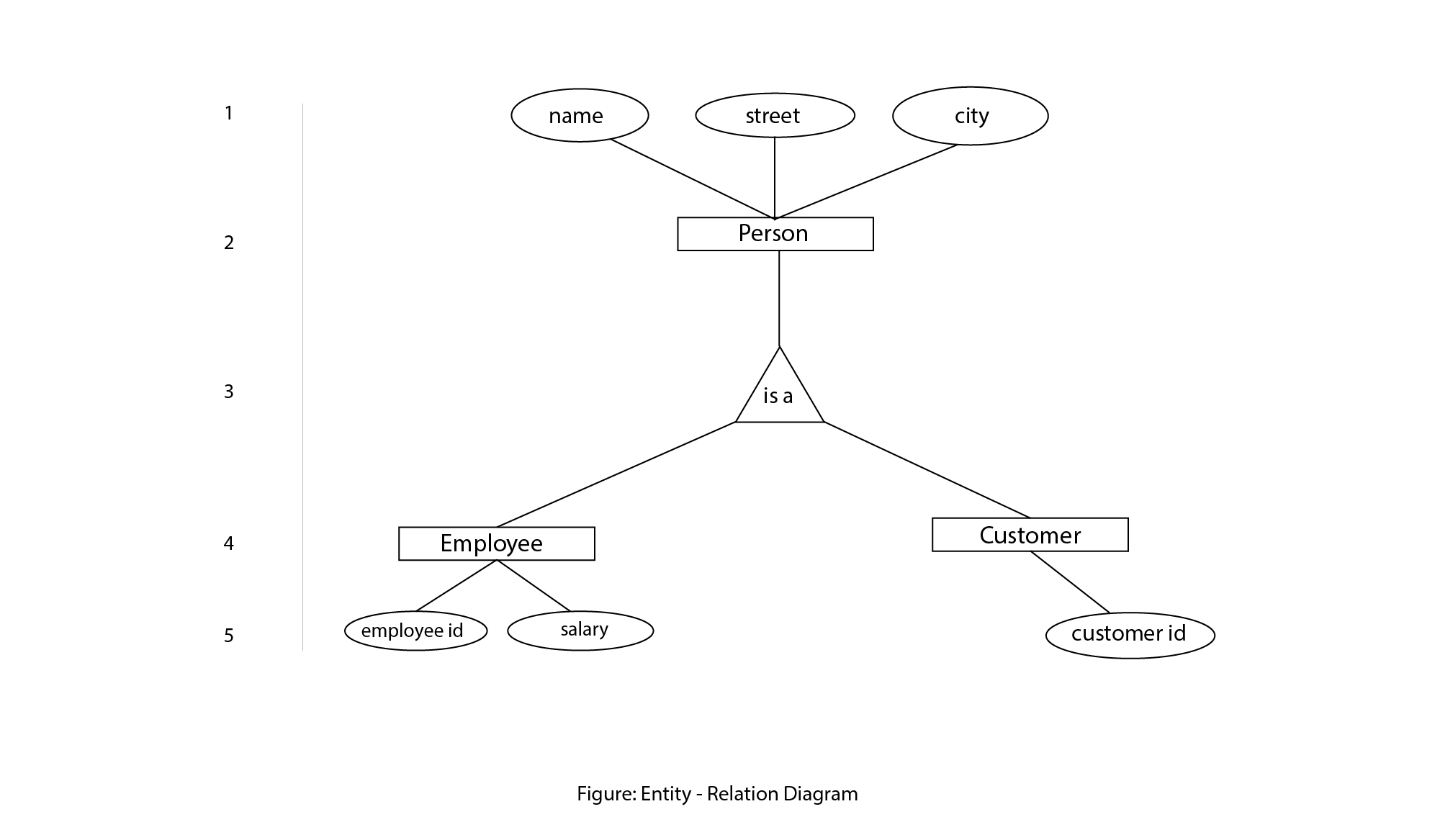E-R Model Diagram and Extended E-R Feature in DBMS
By: Rajat Kumar | Last Updated: June 14, 2021
1. Introduction:
Hi techies, in this articles we are going to discuss about entity-relational data model diagram in database management system, and Extended E-R Feature in database management system. So let’s get started.
2. Entity – Relationship Diagram (ERD) Definition:
An ERD can express the overall logical structure of a database graphically.
2.1 Components of ERD:
Rectangles: represents the entity sets.
Ellipses: represents the attributes.
Diamonds: represents the relationship sets.
Lines: link the attributes to entity sets and entity sets to relationship sets.
Double ellipses: represents the multivalued attributes.
Dashed ellipses: represents derived attributes.
Doubles lines: indicate the total participation of an entity in a relationship set.
Double rectangle: represents the weak entity sets.
3. Example of E-R Diagram:
Lets take some example - a person (name, street, city) be an entity set which is further classified among “customer” and “employee”.

Each of these person type is describe by a set of attributes that include all the attribute of entity set “person” plus possible additional attribute like “customer id” of “customer” entity. “employee id”, “salary” of “employee” entity.
4. Extended E-R Features:
- Specialization – The process of designating to sub grouping within an entity set is called specialization. In above figure, the “person” is distinguish in to whether they are “employee” or “customer”.
Formally in above figure specialization is depicted by a triangle component labelled (is a), means the customer is a person.
Sometime this ISA (is a) referred as a superclass-subclass relationship. This is also used to emphasize on to creating the distinct lower level entity sets.
- Generalization – generalization is relationship that exist between higher level entity set and one or more lower level entity sets. Generalization synthesizes these entity sets into single entity set.
- Higher level and lower level entity sets – This property is created by specialization and generalization. The attributes of higher level entity sets are inherited by lower level entity sets.
For example: In above figure “customers” and “employee” inherits the attributes of “person”.
- Attribute inheritance: When given entity set is involved as a lower entity set in only one “ISA” (is a) relationship, it is referred as a single attribute inheritance. If lower entity set is involved in more than one ISA (is a) relationship, it is referred as a multi attribute inheritance.
- Aggregation: there is a one limitation with E-R model that it cannot express relationships among relationships. So aggregation is an abstraction through which relationship is treated as higher level entities.
Partner Service: If you want help in DBMS related assignments or homework you can reach out this service TutorDollar.com (Tutordollar provides technical and non-technical assignment help and writing services online for 500+ courses and subjects for students all around the world)
That’s it for this article, in upcoming article we are going to explain you about relational model and different type of keys in database. If you like this article do share with your friends and others. Till then have a good day.